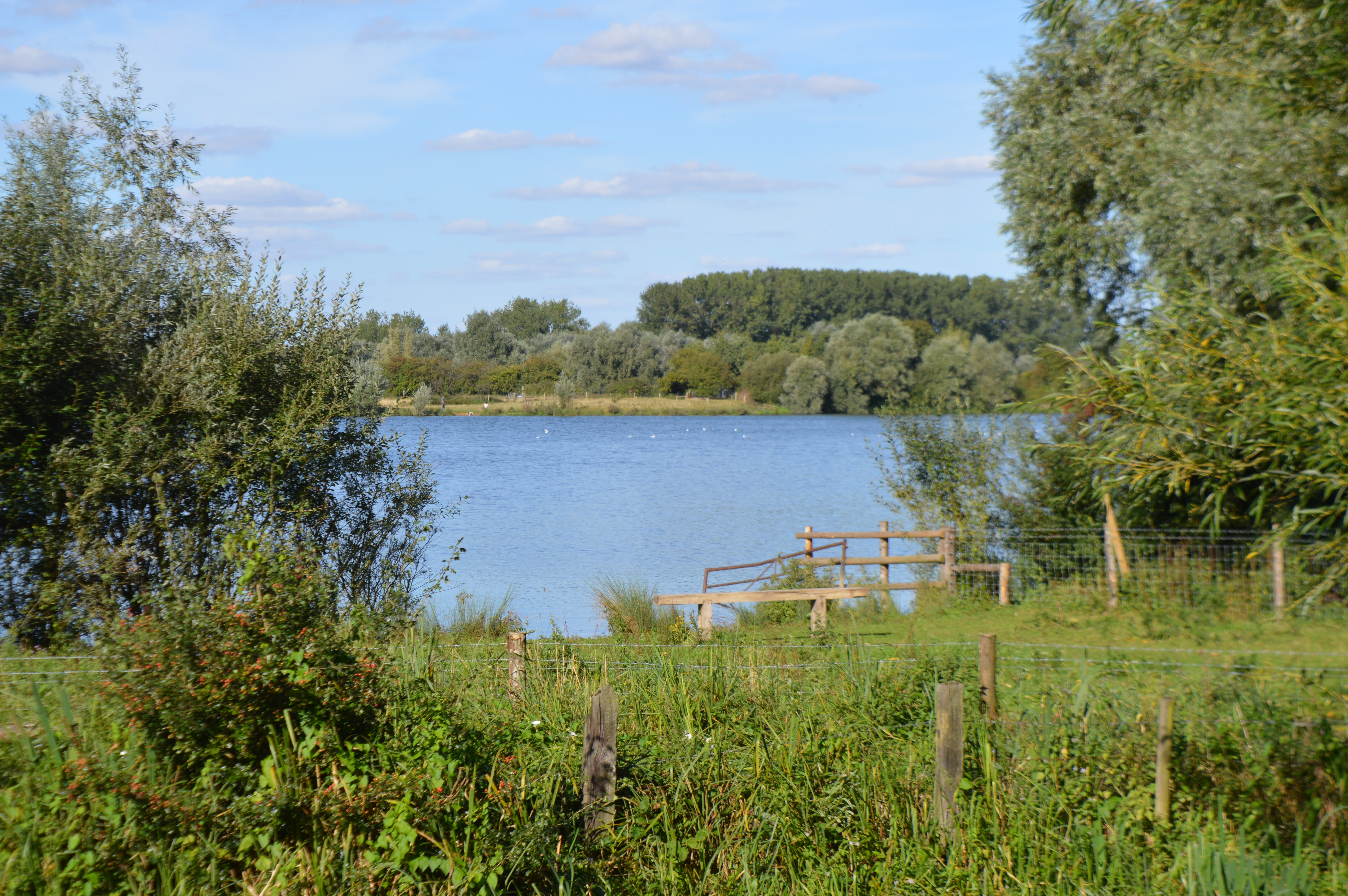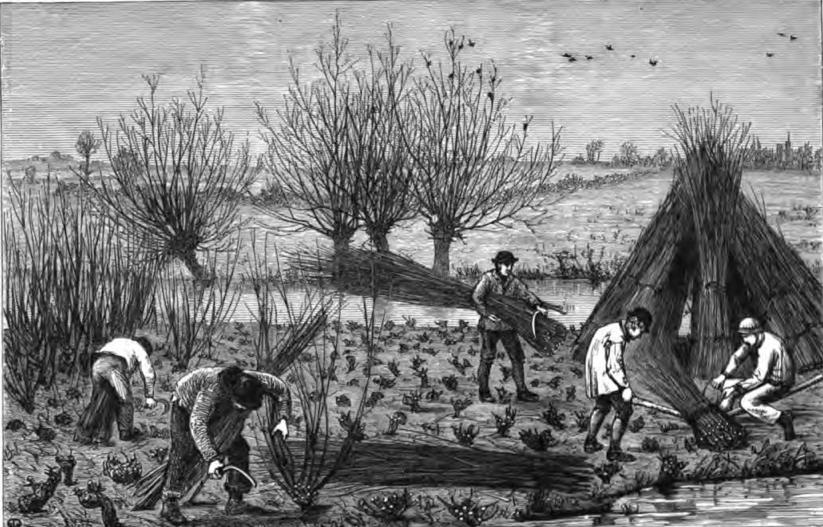|
Pavenham Osier Beds
Pavenham Osier Beds is a 1.3 hectare nature reserve south of Pavenham, on the banks of the River Great Ouse, in Bedfordshire. It is managed by the Wildlife Trust for Bedfordshire, Cambridgeshire and Northamptonshire. This is a wet meadow next to the River Great Ouse, which has the uncommon flower meadow-rue. Osier is a type of willow which is continually cut, stimulating its growth and supplying material for basket weavers. The Trust is continuing the tradition by planting more osiers. An osier bed is an area where willows were formerly planted and coppiced to produce withies which were used for basket making, fish-traps, and other purposes. The willow species ''salix viminalis'' was typically grown for this purpose. Willow rods (cuttings) would be planted, which root easily in moist ground, and the growth of the willow withies would be cut every one or two years. [...More Info...] [...Related Items...] OR: [Wikipedia] [Google] [Baidu] |
Pavenham Osier Beds 2
Pavenham is a small village and civil parishes in England, civil parish on the River Great Ouse in the Borough of Bedford in Bedfordshire, England, about north-west of Bedford. Village amenities consist of Church of St Peter, Pavenham, St Peter's Church, a Public house, pub, Village hall, tennis Club, Cricket Club and golf club. The village is home to many clubs and societies including an active Women's Institutes, WI. The village has two nature reserves, Stevington Marsh, a Site of Special Scientific Interest, and Pavenham Osier Beds, which is managed by the Wildlife Trust for Bedfordshire, Cambridgeshire and Northamptonshire. Timeline 1086: Domesday Book identifies Pavenham in the ancient Hundred (county division), hundred of Buckelowe accessed 1 Jul 2017 [...More Info...] [...Related Items...] OR: [Wikipedia] [Google] [Baidu] |
Nature Reserve
A nature reserve (also known as a wildlife refuge, wildlife sanctuary, biosphere reserve or bioreserve, natural or nature preserve, or nature conservation area) is a protected area of importance for flora, fauna, or features of geological or other special interest, which is reserved and managed for purposes of conservation and to provide special opportunities for study or research. They may be designated by government institutions in some countries, or by private landowners, such as charities and research institutions. Nature reserves fall into different IUCN categories depending on the level of protection afforded by local laws. Normally it is more strictly protected than a nature park. Various jurisdictions may use other terminology, such as ecological protection area or private protected area in legislation and in official titles of the reserves. History Cultural practices that roughly equate to the establishment and maintenance of reserved areas for animals date bac ... [...More Info...] [...Related Items...] OR: [Wikipedia] [Google] [Baidu] |
Pavenham
Pavenham is a small village and civil parish on the River Great Ouse in the Borough of Bedford in Bedfordshire, England, about north-west of Bedford. Village amenities consist of St Peter's Church, a pub, Village hall, tennis Club, Cricket Club and golf club. The village is home to many clubs and societies including an active WI. The village has two nature reserves, Stevington Marsh, a Site of Special Scientific Interest, and Pavenham Osier Beds, which is managed by the Wildlife Trust for Bedfordshire, Cambridgeshire and Northamptonshire. Timeline 1086: Domesday Book identifies Pavenham in the ancient hundred 100 or one hundred (Roman numeral: C) is the natural number following 99 and preceding 101. In medieval contexts, it may be described as the short hundred or five score in order to differentiate the English and Germanic use of "hundred" to des ... of Buckelowe [...More Info...] [...Related Items...] OR: [Wikipedia] [Google] [Baidu] |
River Great Ouse
The River Great Ouse () is a river in England, the longest of several British rivers called "Ouse". From Syresham in Northamptonshire, the Great Ouse flows through Buckinghamshire, Bedfordshire, Cambridgeshire and Norfolk to drain into the Wash and the North Sea near Kings Lynn. Authorities disagree both on the river's source and its length with one quoting and another . Mostly flowing north and east, it is the fifth longest river in the United Kingdom. The Great Ouse has been historically important for commercial navigation, and for draining the low-lying region through which it flows; its best-known tributary is the Cam, which runs through Cambridge. Its lower course passes through drained wetlands and fens and has been extensively modified, or channelised, to relieve flooding and provide a better route for barge traffic. The unmodified river would have changed course regularly after floods. The name ''Ouse'' is from the Celtic or pre-Celtic *''Udso-s'', and probably me ... [...More Info...] [...Related Items...] OR: [Wikipedia] [Google] [Baidu] |
Bedfordshire
Bedfordshire (; abbreviated Beds) is a ceremonial county in the East of England. The county has been administered by three unitary authorities, Borough of Bedford, Central Bedfordshire and Borough of Luton, since Bedfordshire County Council was abolished in 2009. Bedfordshire is bordered by Cambridgeshire to the east and north-east, Northamptonshire to the north, Buckinghamshire to the west and Hertfordshire to the south-east and south. It is the fourteenth most densely populated county of England, with over half the population of the county living in the two largest built-up areas: Luton (258,018) and Bedford (106,940). The highest elevation point is on Dunstable Downs in the Chilterns. History The first recorded use of the name in 1011 was "Bedanfordscir," meaning the shire or county of Bedford, which itself means "Beda's ford" (river crossing). Bedfordshire was historically divided into nine hundreds: Barford, Biggleswade, Clifton, Flitt, Manshead, Redbornestoke, S ... [...More Info...] [...Related Items...] OR: [Wikipedia] [Google] [Baidu] |
Wildlife Trust For Bedfordshire, Cambridgeshire And Northamptonshire
The Wildlife Trust for Bedfordshire, Cambridgeshire and Northamptonshire (WTBCN) is a registered charity which manages 126 nature reserves covering . It has over 35,000 members, and 95% of people in Bedfordshire, Cambridgeshire and Northamptonshire live within five miles of a reserve. In the year to 31 March 2016 it employed 105 people and had an income of £5.1 million. It aims to conserve wildlife, inspire people to take action for wildlife, offer advice and share knowledge. The WTBCN is one of 36 wildlife trusts covering England, and 46 covering the whole of the United Kingdom. In 1912 Charles Rothschild formed the Society for the Promotion of Nature Reserves to protect sites considered "worthy of preservation". The society worked to secure statutory protection, and this began with the National Parks and Access to the Countryside Act 1949. In 1959 the society took on a coordinating role for local wildlife trusts, which covered the whole of Britain and Northern Ireland by 1 ... [...More Info...] [...Related Items...] OR: [Wikipedia] [Google] [Baidu] |
Meadow-rue
''Thalictrum'' () is a genus of 120-200 species of herbaceous perennial flowering plants in the buttercup family, Ranunculaceae, native mostly to temperate regions. Meadow-rue is a common name for plants in this genus. ''Thalictrum'' is a taxonomically difficult genus with poorly understood species boundaries; it is in need of further taxonomic and field research for clarification. Despite their common name of "meadow-rue", ''Thalictrum'' species are not closely related to the true rue (family Rutaceae), but resemble its members in having compound leaves twice or thrice divided. Description Meadow-rue leaves are alternate, bipinnately compound, and commonly glaucous blue-green in colour. The flowers are small and apetalous (no petals), but have numerous long stamens, often brightly white, yellow, pink or pale purple, and are produced in conspicuous dense inflorescences. In some species (e.g. '' T. chelidonii'', '' T. tuberosum''), the sepals are large, brightly coloured and pe ... [...More Info...] [...Related Items...] OR: [Wikipedia] [Google] [Baidu] |
Salix Viminalis
''Salix viminalis'', the basket willow, common osier or osier, is a species of willow native to Europe, Western Asia, and the Himalayas.Meikle, R. D. (1984). ''Willows and Poplars of Great Britain and Ireland''. BSBI Handbook No. 4. .Rushforth, K. (1999). ''Trees of Britain and Europe''. Collins .Perttu, K. L. and Kowalik, P. J. (1997). ''Salix vegetation filters for purification of waters and soils''. Biomass and Bioenergy, Volume 12, Issue 1, 1997, Pages 9-19. Elsevier Science Ltd. Description ''Salix viminalis'' is a multistemmed shrub growing to between (rarely to ) tall. It has long, erect, straight branches with greenish-grey bark. The leaves long and slender, 10–25 cm long but only 0.5–2 cm broad; they are dark green above, with a silky grey-haired underside. The flowers are catkins, produced in early spring before the leaves; they are dioecious, with male and female catkins on separate plants. The male catkins are yellow and oval-shaped; the female catkins ... [...More Info...] [...Related Items...] OR: [Wikipedia] [Google] [Baidu] |
Osier Bed
An osier bed is where historically willows were planted and coppiced to produce withies, which were used for basket making, fish-traps, and other purposes. The willow species ''salix viminalis ''Salix viminalis'', the basket willow, common osier or osier, is a species of willow native to Europe, Western Asia, and the Himalayas.Meikle, R. D. (1984). ''Willows and Poplars of Great Britain and Ireland''. BSBI Handbook No. 4. .Rushforth, K ...'', known as the "common osier" was typically, although not exclusively, grown for this purpose. The marshy fringes of rivers, especially those which were often flooded and those with small islands, aits, eyots, or holts, were the most common locations for osier beds. Willow rods (cuttings) would be planted, which root easily in moist ground, and the growth of the willow withies would be cut every one or two years. Osier beds and basket-weaving using willow were a significant industry in Great Britain until the early 20th Century, when indust ... [...More Info...] [...Related Items...] OR: [Wikipedia] [Google] [Baidu] |
Coppiced
Coppicing is a traditional method of woodland management which exploits the capacity of many species of trees to put out new shoots from their stump or roots if cut down. In a coppiced wood, which is called a copse, young tree stems are repeatedly cut down to near ground level, resulting in a stool. New growth emerges, and after a number of years, the coppiced tree is harvested, and the cycle begins anew. Pollarding is a similar process carried out at a higher level on the tree in order to prevent grazing animals from eating new shoots. ''Daisugi'' (台杉, where ''sugi'' refers to Japanese cedar), is a similar Japanese technique. Many silviculture practices involve cutting and regrowth; coppicing has been of significance in many parts of lowland temperate Europe. The widespread and long-term practice of coppicing as a landscape-scale industry is something that remains of special importance in southern England. Many of the English language terms referenced in this article are pa ... [...More Info...] [...Related Items...] OR: [Wikipedia] [Google] [Baidu] |
Withies
A withy or withe (also willow and osier) is a strong flexible willow stem, typically used in thatching, basketmaking, gardening and for constructing woven wattle hurdles.Life on the Upper Thames by H. R. Robertson (1875), chapters II-IV The term is also used to refer to any type of flexible rod of natural wood used in such as or created through |
Salix Viminalis
''Salix viminalis'', the basket willow, common osier or osier, is a species of willow native to Europe, Western Asia, and the Himalayas.Meikle, R. D. (1984). ''Willows and Poplars of Great Britain and Ireland''. BSBI Handbook No. 4. .Rushforth, K. (1999). ''Trees of Britain and Europe''. Collins .Perttu, K. L. and Kowalik, P. J. (1997). ''Salix vegetation filters for purification of waters and soils''. Biomass and Bioenergy, Volume 12, Issue 1, 1997, Pages 9-19. Elsevier Science Ltd. Description ''Salix viminalis'' is a multistemmed shrub growing to between (rarely to ) tall. It has long, erect, straight branches with greenish-grey bark. The leaves long and slender, 10–25 cm long but only 0.5–2 cm broad; they are dark green above, with a silky grey-haired underside. The flowers are catkins, produced in early spring before the leaves; they are dioecious, with male and female catkins on separate plants. The male catkins are yellow and oval-shaped; the female catkins ... [...More Info...] [...Related Items...] OR: [Wikipedia] [Google] [Baidu] |





_P034_OSIER_CUTTING.jpg)